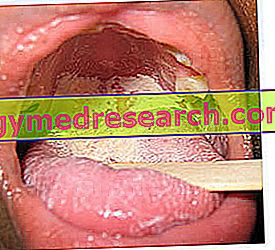
What is Xagrid?
Xagrid is a medicine that contains the active substance anagrelide. It is found in white capsules (0.5 mg).
What is Xagrid used for?
Xagrid is used to reduce the number of platelets (components that help blood to clot) in patients with essential thrombocythaemia (a disease characterized by an excessive amount of platelets circulating in the blood). The term "essential" indicates that the disease has no obvious cause. Xagrid is used when patients are unresponsive and cannot tolerate the therapy they are following and in patients considered to be "at risk" because of their age (over 60 years), too high platelet counts or past clotting problems.
As the number of patients with essential thrombocythaemia is low, the disease is considered rare and Xagrid has been designated an "orphan medicine" (a medicine used in rare diseases) on December 29, 2000.
The medicine can only be obtained with a prescription.
How is Xagrid used?
Treatment with Xagrid should be prescribed by a doctor experienced in the treatment of essential thrombocythemia.
The recommended starting dose of Xagrid is one capsule twice a day. After one week the dose is increased each week by one capsule a day, until the patient reaches a platelet count of less than 600 million platelets per milliliter, possibly between 150 and 400 million / ml (normal concentration in healthy people). Usually results are recorded within two or three weeks of starting treatment. The maximum recommended dose of Xagrid is five capsules at a time (twice a day). Doses up to 20 capsules a day have been used during the development and testing of the medicine.
How does Xagrid work?
Essential thrombocythemia is a disease characterized by an overproduction of platelets by the bone marrow. This puts the patient at risk of developing blood clots or bleeding. The active ingredient in Xagrid, anagrelide, prevents the production and growth of "megakaryocytes", cells that are found in the bone marrow and that produce platelets. This reduces platelet counts and improves patients.
How has Xagrid been studied?
Xagrid has been analyzed in four main studies conducted on patients with various diseases characterized by overproduction of cells by the bone marrow. In the studies around 3000 patients were suffering from essential thrombocythemia, most of which had previously been treated with other medicines, but had to change treatment. Xagrid has not been compared with other medicines. Patients were treated with Xagrid for up to five years. The main measure of effectiveness was the number of patients with "complete response", defined as a reduction in the platelet count by at least 50% from the start of treatment or below 600 million / ml.
What benefit has Xagrid shown during the studies?
Xagrid was effective in reducing the platelet count. In the major study, 67% of patients with essential thrombocythemia (628 out of 934) and 66% of those who did not tolerate or did not respond to other treatments (480 out of 725) showed a complete response to Xagrid. The number of bleeding problems found by patients has decreased during the studies, but the benefit of this reduction has not been convincingly demonstrated.
What are the risks associated with Xagrid?
The most common side effect of Xagrid (seen in more than 1 patient in 10) is headache. For the full list of all side effects reported with Xagrid, see the Package Leaflet.
Xagrid should not be used in people who may be hypersensitive (allergic) to anagrelide or any of the other ingredients. Xagrid should not be used in patients with moderate or severe liver or kidney disease.
Why has Xagrid been approved?
The Committee for Medicinal Products for Human Use (CHMP) concluded that Xagrid was effective in reducing platelet counts in patients with essential thrombocythaemia. The committee decided that Xagrid's benefits outweigh its risks for second-line treatment of at-risk patients with essential thrombocythemia. The committee recommended that Xagrid be given marketing authorization.
Xagrid was authorized in "exceptional circumstances". This means that, as the disease is rare, it has not been possible to obtain complete information on Xagrid. Every year the European Medicines Agency will review any new information that may be available and, if necessary, this summary will be updated.
What information is still awaited for Xagrid?
The company that markets Xagrid will carry out further studies, examining in particular Xagrid in comparison to hydroxyurea (another medicine used in essential thrombocythemia) and the use of Xagrid in pregnancy. It will also communicate to the CHMP all published information on the effectiveness of the medicine.
More information on Xagrid
On 16 November 2004, the European Commission granted a marketing authorization valid for the whole of the European Union to Shire Pharmaceutical Contracts Limited for Xagrid. The marketing authorization was renewed on 16 November 2009.
For a summary of the opinion of the Committee for Orphan Medicinal Products on Xagrid, click here.
The full EPAR for Xagrid can be found here.
Last update of this summary: 11-2009.



